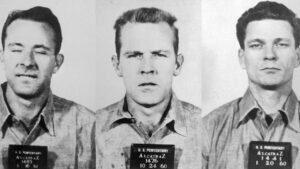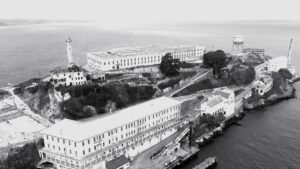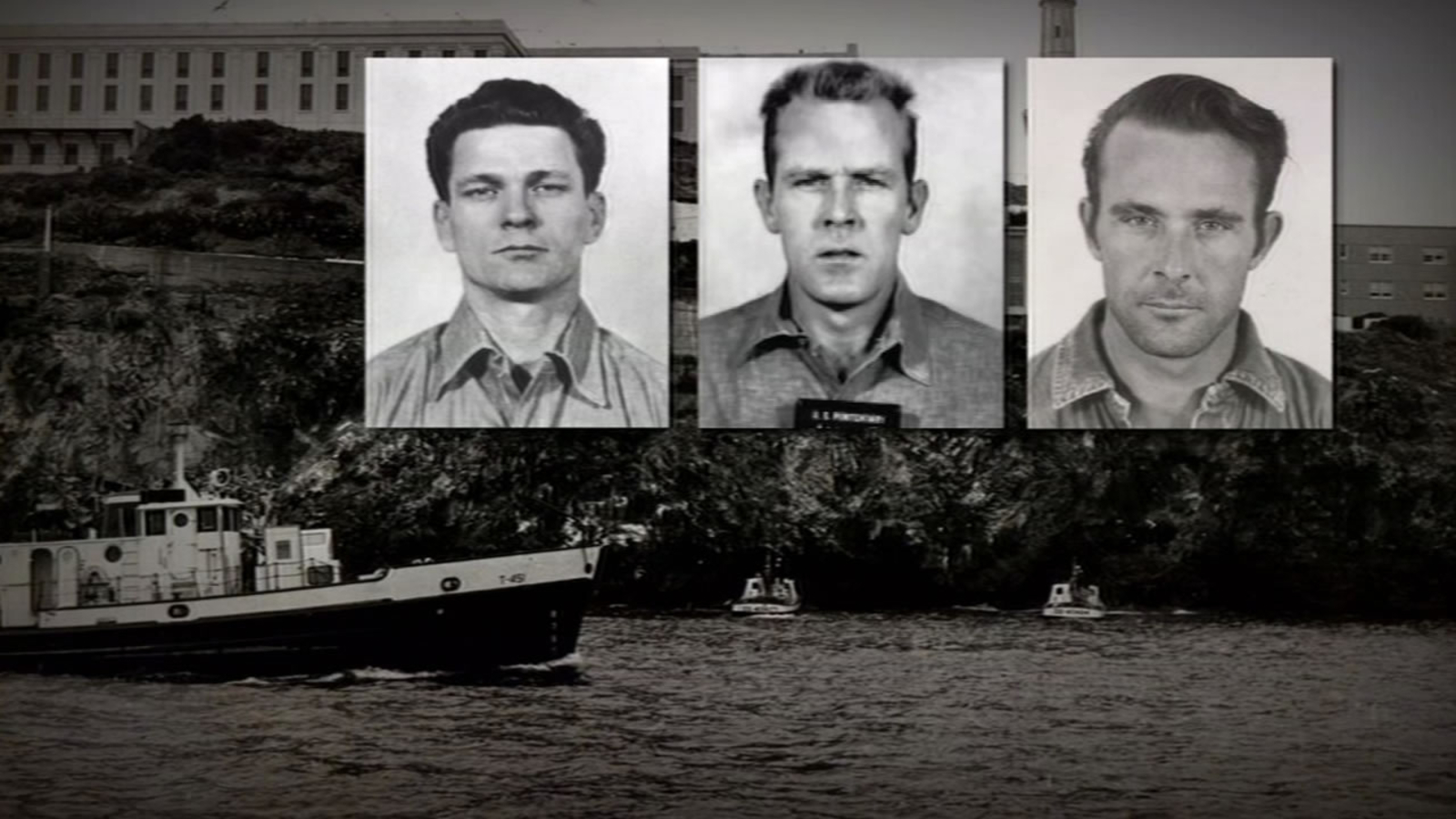How Three Inmates Outsmarted America’s Most Secure Prison with a
Spoon-

Certainly! Here’s a detailed account of the infamous 1962 Alcatraz prison escape, often
called “the most ingenious prison break” in Alcatraz’s 30-year history. This daring escape
remains one of the most fascinating mysteries in U.S. criminal history.
Background: Alcatraz Federal Penitentiary
-
Location: Alcatraz Island, San Francisco Bay
-
Active Years: 1934 – 1963
-
Known For: Housing America’s most dangerous criminals, including Al Capone and George “Machine Gun” Kelly
-
Security: Considered escape-proof due to strong security, cold water, and powerful currents.

The Escapees
-
Frank Morris – Highly intelligent with an IQ of 133, previously escaped from other prisons.
-
John Anglin – Bank robber, skilled at using tools.
-
Clarence Anglin – Brother of John, also a bank robber and escape artist.
-
Allen West – Part of the plan but failed to escape on the night.
The Plan: Years in the Making
The escape took six months of secret planning, led by Frank Morris.
Tools and Tactics:
-
Spoons and forks stolen from the dining hall and sharpened into chisels.
-
Drill made from a vacuum cleaner motor.
-
Paper-mâché dummy heads made of toilet paper, soap, and hair from the barbershop to fool the guards during bed checks.
-
Vent holes behind their cell walls were widened with tools during music hours to mask the noise.
-
Raft and life vests made from 50+ raincoats stitched and glued using heat from steam pipes.
The Escape: June 11, 1962
-
They crawled through holes behind their cells into a utility corridor.
-
Climbed to the roof via plumbing shafts.
-
Crossed the roof, went down a 50-foot wall, and then climbed two 12-foot fences.
-
Launched the raft from the northeast shore of the island into the icy waters of San Francisco Bay.
Allen West couldn’t remove his cell vent in time and was left behind.

The Aftermath
-
Guards didn’t notice until the next morning, fooled by the dummy heads.
-
FBI launched an extensive manhunt.
-
The official stance was: “Presumed drowned,” as no bodies were found.
-
In 1979, the case was closed by the FBI, citing “no credible evidence” the men survived.
Theories and Evidence
-
Survived: Letters, reported sightings, and photographs over the decades suggest they may have lived in South America.
-
Drowned: The water was 53°F (12°C), currents strong—experts say survival was slim.
-
2013 Letter: A letter supposedly written by one escapee claimed they all survived and sought a deal with authorities—but the handwriting was inconclusive.
Cultural Impact
-
Books & Documentaries: Numerous retellings.
-
Movie: Escape from Alcatraz (1979) starring Clint Eastwood, portraying Frank Morris.
-
The escape added to the mythical status of Alcatraz.
Fun Facts
-
Their spoon-dug holes were hidden behind cardboard air vent covers.
-
Raincoats were stolen slowly to avoid suspicion.
-
The raft was a 9’x14’ inflatable—ingenious design under constraints.

